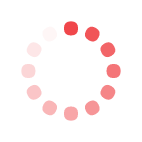What is Rapid Application Development?
Rapid Application Development (RAD),is an adaptive software development methodology that focuses on rapidly developing software prototypes based on continuous feedback.Users uses low-code or no-code development platforms to speed up the development of prototypes and functional applications while using RAD using 4 steps.
Rapid Application Development (RAD), also known as Rapid Application Building (RAB), is an adaptive software development methodology that focuses on rapidly developing software prototypes and iterating on them based on continuous feedback. It is a popular software-development project management strategy and saves time.
The purpose of a Rapid Application Development framework is to provide a source of abstract code that the developer can fill in instead of having to start from scratch.
Users can use low-code or no-code development platforms to speed up the development of prototypes and functional applications while using RAD.
Low Code Development- Low-code (LC) applications can be tailored to specific business needs, implemented quickly, and cost significantly less than systems developed in-house. These applications target development to users rather than professional system developers. Users can usually design and implement their individual or departmental systems in a few hours using point-and-click or pull-down menu interfaces. A search interface is included in the software.
No Code Development- Businesses can use no-code development platforms to develop software quickly and without coding.You can use the WYSIWYG editor or drag-and-drop components to assemble and design business applications.
Rapid Application Development with custom workflows and functionality is possible for both developers and non-developers. The level of customization available with these tools is higher than with low-code development platforms.
Comparing the low-code development platforms, no-code development platforms offer low customization and functionality. Instead of accessing or modifying the source code, no-code development gives you more tools to organize data.
What is RAD Framework?
Rapid Application Development frameworks (RAD frameworks) are a collection of libraries, functions, classes, and reusable objects that follow the Rapid Application Development methodology. RAD frameworks help developers save time by organizing and streamlining their work. The Frameworks save time by eliminating the need to create libraries and functions from scratch.
Instead of a long planning, development, and testing cycle, RAD uses an Iterative and adaptive approach, allowing you to deliver working applications quickly in a competitive software market.
What are the phases of Rapid Application Development?
In the RAD methodology, applications are developed in four phases to achieve a quick Turnaround Time (TAT).
1. Planning:
RAD is one of the critical stages in the Rapid Application Development model, even though it uses a condensed planning approach. It's the stage in which you define a project's scope and learn about the needs of stakeholders (timeline, budget, expectations, and goals).
The planning stage entails a meeting with developers, stakeholders (users), and the team to agree on the best way to meet the requirements as quickly as possible.
The following are the steps in a granular breakdown of the planning phase:
- Investigating the current issue
- Identifying the project's requirements
- Informing Stakeholders of the finalized requirement specifications.
- Obtaining the approval of stakeholders
Hence teams benefit by avoiding confusion, minimizing costly changes, and achieving a clear understanding of stakeholders' needs.
Because the RAD principle assumes that requirements may change during development, the planning phase is minimum. It's all about getting a clear picture of the project.
2. User-Design
On moving to the next phase of Rapid Application Development, the User Design is carried, after gaining a thorough understanding of the client's requirements.
The user design stage entails working diligently to create a prototype with frequent iterations. Clients must maintain contact with developers and provide detailed feedback to ensure that their needs are met.
Developers can make frequent changes and quickly create a satisfactory design using rapid prototyping and iterative development. It ensures that no potential changes or issues are overlooked because the process is completely transparent from the start for all stakeholders.
Prototyping raises developer awareness of component complexities and facilitates the development of robust, structured, and bug-free applications.
3. Construction:
After creating a well-designed prototype, one needs to move on to the construction phase, where one will build a working model of the app.
Due to many issues, tweaks, and changes being looked into during the design phase, developers, programmers, and testers have less time to build interesting applications. Throughout the process, one must maintain contact with the client and solicit feedback to accommodate any changes or suggestions.
Clients may discover that some design concepts don't work as expected in practice during the rapid construction phase. Hence one can return to prototype iteration in such cases to find a possible solution.
Proceed to the next phase after receiving positive user feedback.
4. Implementation:
During this phase, all final changes to the application are made before the product is released. Data conversion and full-scale testing are part of the implementation phase, which is used to find bugs and issues in the product.
The application is used in a live production environment, where teams are optimizing it for stability and maintainability.
Before handing over the final product to the client, the implementation phase includes documenting, completing maintenance tasks, and providing user training.







